The Top Shelf: Case Files 106-115: "One More Dog Rejected"
By Mento 0 Comments
Welcome to The Top Shelf, a weekly feature wherein I sort through my extensive PS2 collection for the diamonds in the rough. My goal here is to narrow down a library of 185 games to a svelte 44: the number of spaces on my bookshelf set aside for my PS2 collection. That means a whole lot of vetting and a whole lot of science that needs to be done, ten games at a time. Be sure to check out the Case File Repository for more details and a full list of games/links!
Case File 106: Frontier Developments's Dog's Life
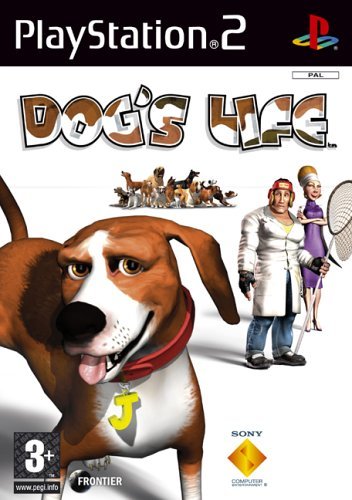
- Original Release (EU): 10/31/2003
- PS2 Exclusive!
From the developers of Elite: Dangerous and Planet Coaster comes the most serious, in-depth simulation game of them all: Dog's Life, a game about the life of a dog. I shouldn't need to describe this one in lurid detail, right? It was on a very memorable episode of UPF. In fact, seeing the game in that video is what convinced me to buy Dog's Life and try it out. No, not for the whole pooping and then carrying the poop around in your mouth aspect, but how the game had a collectathon sensibility with its various color-coded odors and bone collectibles. While you don't do much in the way of platforming, it still had the kind of exploratory vibe to it that the older style N64 platformers (and recent revival Yooka-Laylee) exhibited. It's not quite the dog's dinner that it looks: despite some iffy controls and a very unflattering graphical style, there's a wide range of goals for your dog protagonist to pursue. I'm not going to claim this is some hidden gem of the PS2 era, but beyond the scatological dog turd goofs and its weird pointless plot about a woman making cat food out of dog meat, there's some degree of imagination here. They didn't just make a dog-human anthropomorph with a perpetual Dreamworks face and call it a day like so many other mascot platformers would do; the challenges are all built around the idea of the player being a regular-ass dog with the powers of a dog, and that goes a long way towards making the game feel distinct.
Distinct, if not perhaps top shelf worthy. Eliminated. (And yes, I did screw up the date on this one. Hence why it comes after last week's November-themed list.)
Case File 107: Tecmo's Project Zero 2: Crimson Butterfly
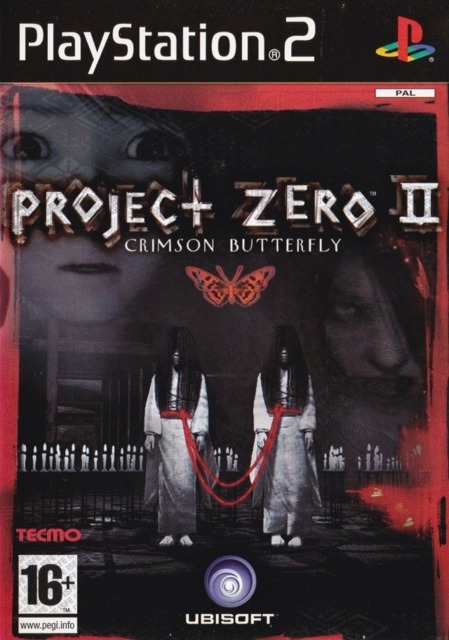
- Original Release (JP): 27/11/2003
- Not PS2 Exclusive (was released on Xbox and remastered for Wii)
Horror games have never been my forte. Honestly, that goes horror media in general. The idea of eliciting fear as a form of entertainment has always seemed foreign to me, when I've always preferred to be amused or excited or elucidated by the fiction I consume. With games, though, horror media has found its optimal format: there's a lot to be said for a scary movie you can only watch through closed fingers or a terrifying book you can't bring yourself to finish reading, but a video game is instinctual and present in a way other media cannot be. You're not just passively watching some doomed ingénue cautiously stroll towards her demise, you're actively forced to make it happen to continue the game's plot. A locked door, an ominous presence in the distance, a grimoire coursing with eldritch energy: they all wait for you to take that fatal step forward, to do what must be done for the narrative to resume. It makes it much easier to put yourself in that situation, thus magnifying the fear several-fold; to the extent that many of us are apprehensive about the idea of embarking on a VR horror experience, which makes the separation between reality and fiction even less overt. The only issue is that a lot of horror games haven't found a way to properly capitalize on their advantage. I would argue that the second Project Zero game ("Fatal Frame" to those in North America, and simply "Zero" to the Japanese) is able to come closest to horror game nirvana by not entirely depriving the player of a means of defending themselves, but one that still puts them in constant terrifying peril. The sequel makes a lot of important enhancements to the otherwise fine original, adding a more personal tale of a pair of twins trapped in a cursed village that once performed frequent rituals that forced a twin to murder their sibling and use that uniquely potent level of suffering and despair to keep a yawning pit to the netherworld sated for another decade. The most effectual scares come from the game's dual antagonists: Sae, a twin who botched her own ritual causing the Malice of the underworld to engulf the town and turn her an into an incredibly powerful and irrevocably insane angel of death, and the Kusabi - an outsider tortured nearly to death that was offered to the abyss as an anguished aperitif, who was instead warped by the Malice into a vicious spirit that is almost unrecognizable as a former human. Both are completely indestructible for most of the game, allowing Project Zero 2 to have its normal exorcizable ghost enemies and unstoppable Nemesis-style foes both.
Project Zero 2 was and still is my favorite horror game, despite strong competition from the likes of Frictional Games's Amnesia: The Dark Descent and Soma or the heady metaphysical chills of Konami's Silent Hill. It finds a middle ground for the "run and hide" and "stand and fight" schism of horror game enemies, has an affecting story that engenders revulsion and compassion alike, looks incredible for the PS2 with its eerie dilapidated traditional Japanese buildings and ghostly special effects, and that central core gameplay conceit of snapping spooks the moment they lunge for an attack is still a brilliantly cruel idea for a combat engine. It might not have the Exclusivity Tilt (if you can find the Wii version, it sounds like that's the one to go for) but there's no way it avoids the shelf, even if it ends up being the only representative of the survival horror genre up there. Approved.
Case File 108: Remedy's Max Payne 2: The Fall of Max Payne
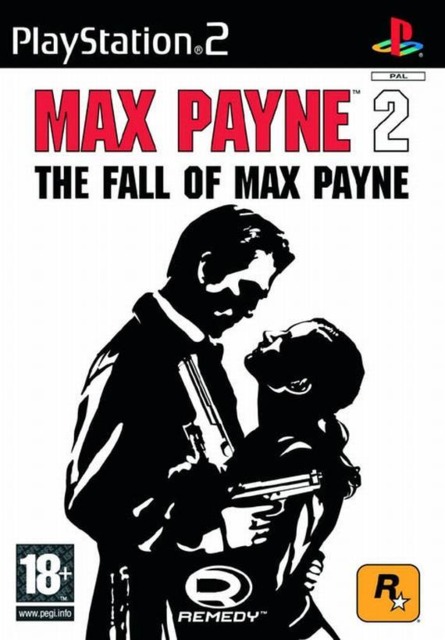
- Original Release (NA): 02/12/2003
- Not PS2 Exclusive (originally a PC game)
I don't know what it is, but I didn't enjoy the second Max Payne as much as the first. Maybe it was that the novelty of bullet-time had worn off a little. Maybe it was because I played it almost a decade later and that particular market of cinematic third-person shooters had moved on (though not as much as you might hope). Quite possibly it was because of the game's surreptitious self-adjusting difficulty curve, which like Left 4 Dead subtly made the game harder or easier depending on how well the player was performing, the net result of which simply created a lot of difficulty speed bumps that made you feel inadequate when you'd come back to a tough encounter that previously killed you only to discover that it had been "softened" for your sake. Max Payne 2 continues in the noirish direction of the original, adding a requisite femme fatale in the returning (and previously dead) contract assassin Mona Sax and a whole conspiracy thriller plot that is thankfully less fixated on Max's crumbling psyche and hallucinations about crying infants, and for the most part is as competent and entertaining as the original. It just felt a little less fresh overall, though. Well, besides for that difficulty thing, but I suspect the game would've been better off without that.
Like the first Max Payne, my reason for dropping this game is not so much that I'm generally lukewarm towards it but the fact that the PC version seems like the clearly better choice. The bullet-time relies on having an opportunity to line up shots and take out multiple foes in a desperate maneuver, and the keyboard and mouse is better suited for that sort of split-second precision shooting. As the native platform and one already known for its versatility, I might argue that the game is better optimized on PC also. For those reasons and more, it's time for Max Payne to fall from this feature. Eliminated.
Case File 109: Sega Wow's Nightshade
- Original Release (JP): 04/12/2003
- PS2 Exclusive!
The early 00s were a time of resurgence for the noble ninja, with the triple threat that was the PS2 Shinobi reboot in 2002 (which I rented, but don't remember well enough for one of those post-script shout outs), its spin-off/sequel Nightshade in 2003 and Tecmo's own Ninja Gaiden reboot in 2004. My enduring memories of all three are of the harsh difficulty: in fact, I bounced off all of them at various points long before I could complete them. Of those three Nightshade is the one I remember the least and, ironically, is the only one I own. I remember that it felt a little like one of those bullet-hell shoot 'em ups or a game like Contra, because of the way it combined dizzying speed with evading a lot of attacks in quick succession. Exciting and kinetic, sure, but not the kind of game I had the concentration or dedication to conquer. I also didn't realize until recently that it was developed by Sega Wow (which at various times was also known as Overworks and Wow Entertainment), which is also responsible for one of my favorite JRPGs (Skies of Arcadia, and its GameCube remake) and a beloved lesser-known PS2 game that we'll be seeing... well, next week, in fact.
It's been a few years since I last booted up the game and while my gaming skills haven't improved in that time - sadly, I fear it's the opposite - I might be curious enough to see if I can't figure it out with a more patient approach. Nightshade's fairly well-regarded among fans of harder, invariably ninja-focused, action games and it probably deserves another chance for recognition/redemption more than the dreck I've been advancing forward lately. Considered.
Case File 110: Sonic Team's Sonic Heroes

- Original Release (EU): 05/12/2003
- Not PS2 Exclusive (also out on Xbox, GameCube and PC)
Oh boy, this piece of shit. Let me tell you a little story I've titled "Don't Trust Sonic Fans". Back when I was pursuing my college degree of, well, let's call it Applied Pointlessness in Game Design, I was compelled to purchase Sonic Heroes by the hype generated for the brand new Sonic game by my small circle of acquaintances within the course. I had fond enough memories of playing through the 2nd and 3rd games for the Sega Mega Drive, as I'm sure did many folk who continue to get suckered by each new Sonic promotional push that promises a return to the golden era of the occasionally golden hedgehog, but had dropped off the series since it went 3D. Fact is, I've never really been a big Sega follower, and only bought a Dreamcast and Saturn long after the fact so I could take advantage of the thrifty pre-owned market of the city I inhabited to pick and choose the console exclusives I wanted to catch up on. The hype for Sonic Heroes turned out to be... misplaced. I don't blame those coursemates - while they probably thought Sonic Adventure was a completely acceptable video game, an illusion propelled by nostalgia that the more recent rereleases have finally helped to lift, no-one could've anticipated that Sonic Heroes was a buggy, poorly conceived mess that attempted to take the idea Adventure introduced of making each character's campaigns play very differently, which in actuality rendered half of them as borderline torturous mini-games on a par with Big the Cat's notorious "fishing for Froggy". It's no Sonic the Hedgehog 2006, I'll hasten to clarify, but at that point we're arguing over which garbage dump would be the more pleasant vacation spot.
So... yeah, farewell Sonic Heroes. I'll always have your earworm of a theme if I need something to remember you by. Eliminated.
Case File 111: Black Isle's Baldur's Gate: Dark Alliance II
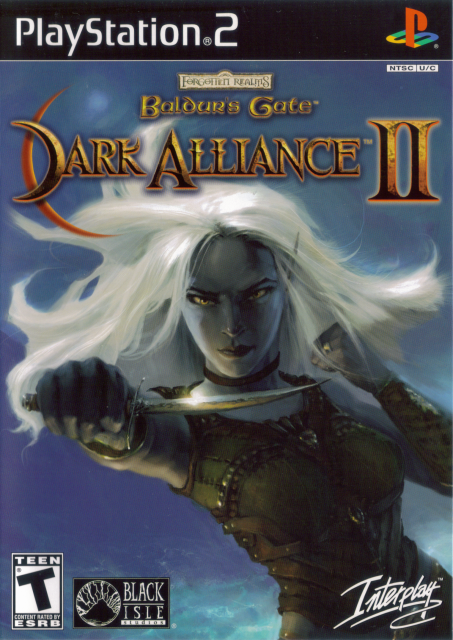
- Original Release (NA): 20/01/2004
- Not PS2 Exclusive (also out on Xbox)
In a surreal bit of timing, the sequel to Snowblind's Dark Alliance offshoot of BioWare's Baldur's Gate series - which attempted to "console-ify" the critical darling CRPG by streamlining a lot of the more leisurely-paced (gait-like, you might say) aspects common to the genre for a more action-oriented hack-and-slash loot RPG approach - came about a couple of weeks before Snowblind's next project: a functionally similar loot RPG adaptation of 989 Studios's venerable and @marino-approved MMORPG EverQuest, dubbed Champions of Norrath. In another curious twist to the tale, Dark Alliance 2 was handled by Black Isle Studios - an RPG-focused division of Interplay that developed Icewind Dale and Planescape Torment and were the ones to publish the original Baldur's Gate. They studied this new Dark Alliance engine format and produced a sequel of a similar caliber, much like they had done with the Infinity Engine games that followed BioWare's trailblazing CRPG. From what I've read, Snowblind weren't too pleased about either the appropriation of their engine or the competition to their upcoming game which also utilized it.
When I wrote about the original Dark Alliance for this feature I eliminated it due to my "superior sequel" clause, since I wanted the shelf to be more representative of my love of the PS2 than simply stacking it with sequels from the best franchises. That elimination decision might've been made too hastily: there's a lot of debate around whether Snowblind's original vision or Black Isle's attempt to improve on the established model created the superior product, similar to the arguments around Fallout 3 and Fallout: New Vegas. It's been so long since I played the first that I perhaps can't trust my own take as much as I'd like. What I think I'll do instead is eliminate both the Dark Alliance games - I always preferred the original CRPGs, if I'm being frank - and instead let the Snowblind loot game find its champion in... Champions. Either of the Champions. Eliminated.
Case File 112: Nippon Ichi Software's Phantom Brave
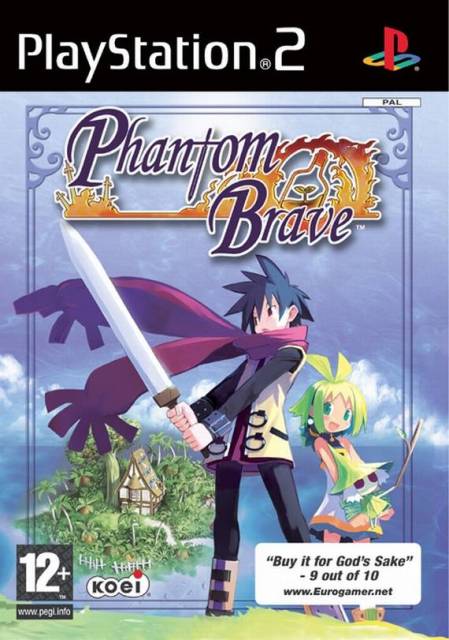
- Original Release (JP): 22/01/2004
- Not PS2 Exclusive (later ported to Wii, PSP and Steam)
It's our third NIS SRPG for this feature, and probably the most subversive of that particular clan. For one, the game eschews grids and allows units to move in any direction, creating circular areas of movement for each unit that offers more freedom. The second is that you only have one living character on your team at any time: Marona, the heroine. Her unique power is to summon Phantoms to fight for her, including her spectral guardian Ash (that guy with the scarf) who is always around in cutscenes. The player does that by "possessing" objects in the vicinity, such as trees, rocks, bushes and other small or medium-sized naturally-occurring or manmade fixtures - each of these objects has a certain effect on the stats of the summoned Phantom also, so for example if the spirit possesses a rock then they'd see greater defensive values but perhaps slower movement speed. It's a very strange ruleset to get used to, but that just helps it stand out all the more. So too does its bummer of a story, which sees the cheerful young Marona ostracized for her spooky powers and struggle to make friends, to the extent that you spend the first few hours thoroughly disheartened by everyone you meet recoiling in horror at Marona's presence and sending her hate mail. Doesn't help that her only friend and protector is a ghost himself, who worked alongside her parents before all three were killed by a colossal demonic presence named Sulphur. The story turns around eventually as various smarter and more compassionate NPCs begin appreciating Marona more for stepping in whenever there's trouble, but it's hard going for those first few chapters.
I really like Phantom Brave, but I'm not going to pretend that you aren't better off with any of its enhanced "We Meet Again" ports, all of which include a brand new story mode and various other tweaks and additions. However, that is also the case for my other favorite NIS game, Disgaea: Hour of Darkness, so I'm thinking of having the two duel for my affection in the second round. Because NIS SRPGs had been such a major presence back when I was playing PS2 games regularly, I'd like to have at least one of them on the shelf. Hey, I might still consider having both up there, since these aren't really sequels. Considered.
Case File 113: tri-Ace's Star Ocean: Till the End of Time
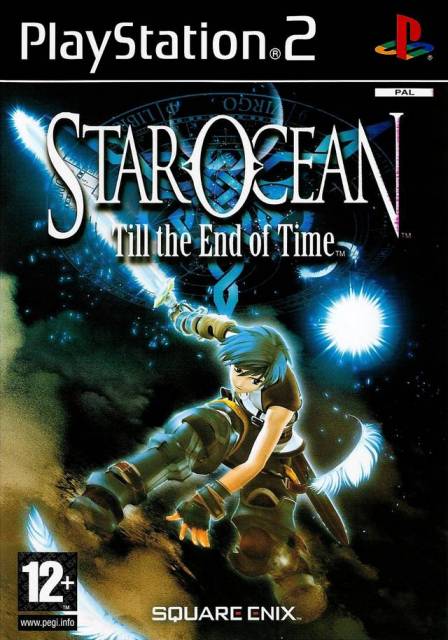
- Original Release (JP): 22/01/2004
- PS2 Exclusive!
I really wanted to like Till the End of Time, the third in the Star Ocean series of sci-fi RPGs. I'd enjoyed what little I played of Star Ocean 2 and have been surprisingly patient with tri-Ace in general over the years, enjoying the likes of Infinite Undiscovery for 360 and Valkyrie Profile, the sequel of which should coming up in this feature in due time. Till the End of Time is a difficult game to enjoy, however, or perhaps one that can be more diplomatically described as an acquired taste. As Fayt, a youth on board a massive vacation starship who conveniently whiles away his downtime in a virtual reality combat simulation game, giving him all the melee and survival skills he might need if he hypothetically crash lands on a planet stuck in a medieval era of technological development. After an attack on his ship from the Vendeemi, an advanced and previously peaceful alien race, which eventually leads to exactly what I described above, he is first pressed to survive his current predicament before figuring out a way to get back to his parents and friend Sophia, or at least determine what happened to them after they got split up. The game drifts between traditional fantasy milieus and outer space venues, hopping between a few planets with a number of recurring party members as the story continues to build around Fayt, his mysterious heretofore untapped powers (ain't that always the way?) and an unstoppable and mysterious interstellar force that has both humanity and Vendeemi on the run. The game has a few progression and mini-game innovations and a real-time combat engine that rewards quick and decisive action, but is overall something of an overambitious mess. I have vague memories of a system that rewards map completion, requiring the player hug the walls of every new area to get that elusive 100%, an invention system that lets you create new items from found objects but only earns you money if you beat other AI inventors to the idea first, and Battle Trophies which reward bonus options to the player's menus for accomplishing increasingly unlikely battle conditions.
The game is extremely challenging, through what I imagine was an unintentional quirk of how the player acquires new healing items. It's easy to get to the point where you have no more money for healing items and cannot survive the difficult battles to earn more which show up midway through your first planet exploration, when the Vendeemi come back and harder enemies start spawning everywhere. With no means to make money to keep myself alive, I got kind of stuck and gave up. I'm not done with Star Ocean entirely - I bought the sequel The Last Hope for 360 and never played it - but I wonder how long I'd last if I restarted the game. It could just be that its ambition overshadowed its quality - the original version of the game, first released in 2003, was so buggy that it necessitated a Director's Cut the following year to address the many issues, which is the version we saw in North America and Europe. But big, imaginative and overblown JRPGs are also sort of my whole aesthetic, so maybe it deserves another chance with a bit more of a measured approach. Could be that I ragequit without taking the time to figure out its quirks. Or it just sucks. Let's find out, shall we? Considered.
Case File 114: Atlus's Shin Megami Tensei: Lucifer's Call
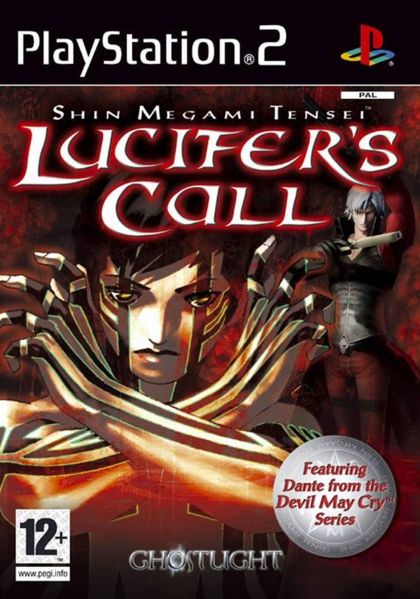
- Original Release (JP): 29/01/2004
- PS2 Exclusive!
This song, which plays during certain high-stakes boss battles, conveniently highlights in a microcosm what Shin Megami Tensei: Lucifer's Call (a.k.a. Nocturne a.k.a. SMT III) is all about. The track initially resembles one of the faster-paced battle tunes from Final Fantasy 7 or 8, ramping up the tempo with its organ synth before abruptly giving way to grimy metal guitars and drums and a heavily distorted throaty voice barking about rejecting gods like a (more) demonic Tom Waits. Shin Megami Tensei isn't Final Fantasy. Final Fantasy might as well be a baby's passing daydream about butterfly farts compared to the underworld of hurt the core SMT series drags its victims into. This game is mean. What began as a dungeon crawler about nerds summoning demons from their computer box and having to get bailed out by Stephen Hawking matured into one of the most gritty, uncompromising and metaphysically dense RPG series out there, and is deliberately designed to eat newcomers for breakfast unless they acclimate themselves darn quick to the in-depth demon-fusing and weakness-covering that these games involve. I regret to say that I bounced off Nocturne pretty hard initially, unprepared for its difficulty as I was, but have come to respect what the game demands of the player through the slightly more approachable MegaTen gateway that is the Persona spin-off franchise.
This game is not only one of the best PS2 RPGs from a consensus standpoint, but assuredly a major rite of passage for any JRPG aficionado also. For those reasons and more, I'm determined to give it another shot to see if I can't rise above all the Matadors and Mots waiting to hand the Demi-fiend his demispherical ass. Considered.
Case File 115: Snowblind's Champions of Norrath
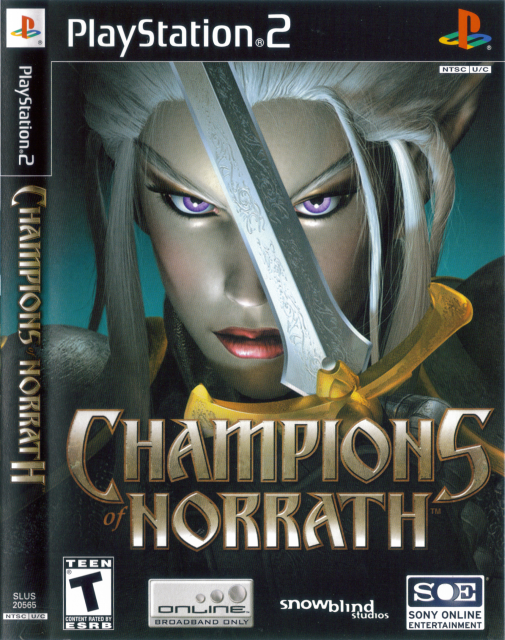
- Original Release (NA): 10/02/2004
- PS2 Exclusive!
As I said, there was very little time separating Dark Alliance 2 and this, Snowblind's successor to their D&D licensed loot RPG which switches licenses and a few gameplay mechanics but largely keeps the hack and slash core intact. I think the reasons I prefer Champions of Norrath (and its sequel) to Dark Alliance are: A) a purity of purpose with a more streamlined and less quest-driven loot RPG, B) that Snowblind had the extra experience to improve their craft, and C) the fact that I hold zero affection for the original EverQuest and for MMORPG gameplay in general that might've otherwise elicited some disappointment in a less-sophisticated console reimagining of that game's world, which was the case for Dark Alliance. Champions is still steeped in EverQuest lore for the most part - Firiona "box art lady" Vie shows up at one point, and the game gets knee-deep in a plot about orcs, vampires and the villainous God of Hatred - but it's more about building a blank slate character and sending them out into the world for fortune and glory, which is perhaps truer to the MMO experience it is nominally based on.
The one issue here will be choosing between Champions of Norrath and its sequel Champions: Return to Arms. Given that you can import your character across games, it might just be prudent to play through them both at some point in the future to determine which is better. Considered.
Results
Welcome to 2004! Again! A bit more of a Japan focus with this week's rundown. It's a little unusual how we seem to alternate, but in this case I think that's mostly due to how the American holiday rush starts a little earlier than the Japanese one. Some real "pile of shame" entries this week also, as I never did complete the much-loved Nightshade, the expansive and surreal Star Ocean: Till the End of Time or the dark horse of the JRPG world that is Shin Megami Tensei and its third core entry Nocturne/Lucifer's Call (I always did feel like the European title was a little on the nose - of course Lucifer is calling you out, that's what he does).
This week sees five new games to be considered for the second round, bringing us to 47 out of 115 games to revisit. We've also added a new game to the shelf (congrats to Project Zero 2!) which makes it nine games strong as of writing. They're not quite high enough to be on cloud nine, but close enough for our purposes. If this week was Japan-centric then next week promises to be even more so with nine of its ten featured games hailing from the land of the rising sun. That also means a lot of great (and not so great) JRPGs to wax lyrical about, so I can't wait.
